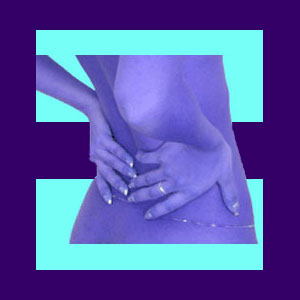
Intractable back pain is a nightmare for patients who must live with chronic symptoms which do not respond to treatment. Generally, back pain in many of its forms is known to be a stubborn condition which continues long-term. The reasons for this sometimes have little to do with degeneration or injury, but instead have everything to do with the theories used to diagnose dorsalgia.
Intractable pain is a living hell for the patient. Nothing will be more physically and psychologically affective than symptoms which do not resolve despite active care. Many patients lose hope quickly and become depressed, despondent and even suicidal in rare circumstances. As a chronic pain sufferer myself, I can certainly understand why.
What is Intractable Back Pain?
Intractable means pain which is immune to being cured. The symptoms are stubborn, defiant and without end, regardless of the types of care attempted. Doctors and therapists will typically try a variety of back pain treatment approaches, but the suffering remains. This is incredibly common for countless millions of patients and has given dorsopathy its fearsome reputation.
Once you have severe back ache for more than 6 – 12 months, you are more likely to continue to suffer for life than you are of ever finding lasting respite. This is the most frightening part of being a back pain patient. Curative statistics are certainly not in your favor. In fact, they are horrifying!
Reasons for Intractable Pain in the Back
Most patients get sick and tired of trying treatment after treatment without success. Many get angry at their doctors or question the effectiveness of the therapies chosen. However, the real reason why the pain does not improve almost always relates to misdiagnosis of the actual causative condition enacting the symptoms. Think about it: It does not matter which treatment you try. No matter what they are or how they work, they will not have any hope of curing pain if they are not directed at the proper source.
Makes sense? This is exactly why most of us never find that cures we so desperately need.
To summarize why this occurs takes only a brief explanation. Common back pain is almost always blamed on some structural issue in the spine, when research clearly shows that these abnormal conditions truly exist and can be verified by diagnostic imaging, but are not typically linked to the occurrence of pain at all.
It is really this simple, but the Cartesian philosophy embraced by doctors have them tripping over their own feet trying to cure symptoms that is not even being sourced by the suspected spinal issues found. It is a real shame and a travesty of medical science.
No wonder there have been recent sweeping changes in diagnostic guidelines and procedures offered to physicians by some of the most notable medical organizations worldwide. These changes include the recommendation not to assume that spinal abnormalities are the source of pain.
Furthermore, doctors have been advised that most structural irregularities are innocent and do not correlate at all to the incidence of back ache. This is a long overdue positive step in the right direction. These associations are finally getting on board with what I have been publicly saying for over a decade already!
Intractable Back Pain Tips
Here we go, one more time, for those who have not read it before in any of my other articles on the subject. My words to you are super simple. If you have ongoing chronic back pain and have tried and tried everything to cure it without success, then it is time to wake up. Why do you think the pain remains? It is so obvious in so many cases.
The diagnosis may be wrong, yet no one thinks to question it. You simply keep trying new therapies, but hold on to the incorrect culprit theory. Reconsider the validity of the diagnostic theory and watch things potentially change for the better. Once I learned this, I was well on my way to treating my own pain more effectively. I hope that this knowledge will bless you with the same result.
I can not tell you how many patients write in telling me that they were in treatment for years and then sought out a second opinion on the true source of their pain. Some diagnoses were judged to be idiopathic in nature upon second observation from an objective new physician. Others were found to have psychosomatic pain. Still more were found to have actual and verifiable physical abnormalities which were not previously discovered and were now blamed for causing pain all along. Upon successful treatment of these newly found issues, the patient almost always recovered.





